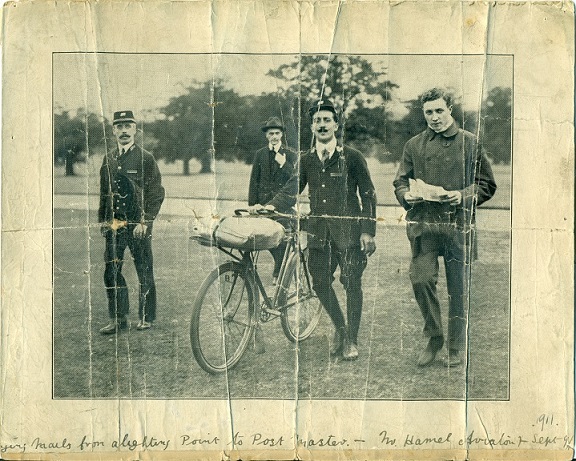
The illustration is a photograph of the delivery of the aerial post at Windsor by a Bleriot monoplane from Hendon, 1911. Shows postmen, Butler and Kersley, taking over the mail from the aviator, Mr Hamel. SL The postmen, Messrs Butler and Kersley, retrieve the first aerial mail from the renowned aviator, Gustav Hamel (1889-1914). Hamel conveyed a consignment of post a distance of about 20 miles in